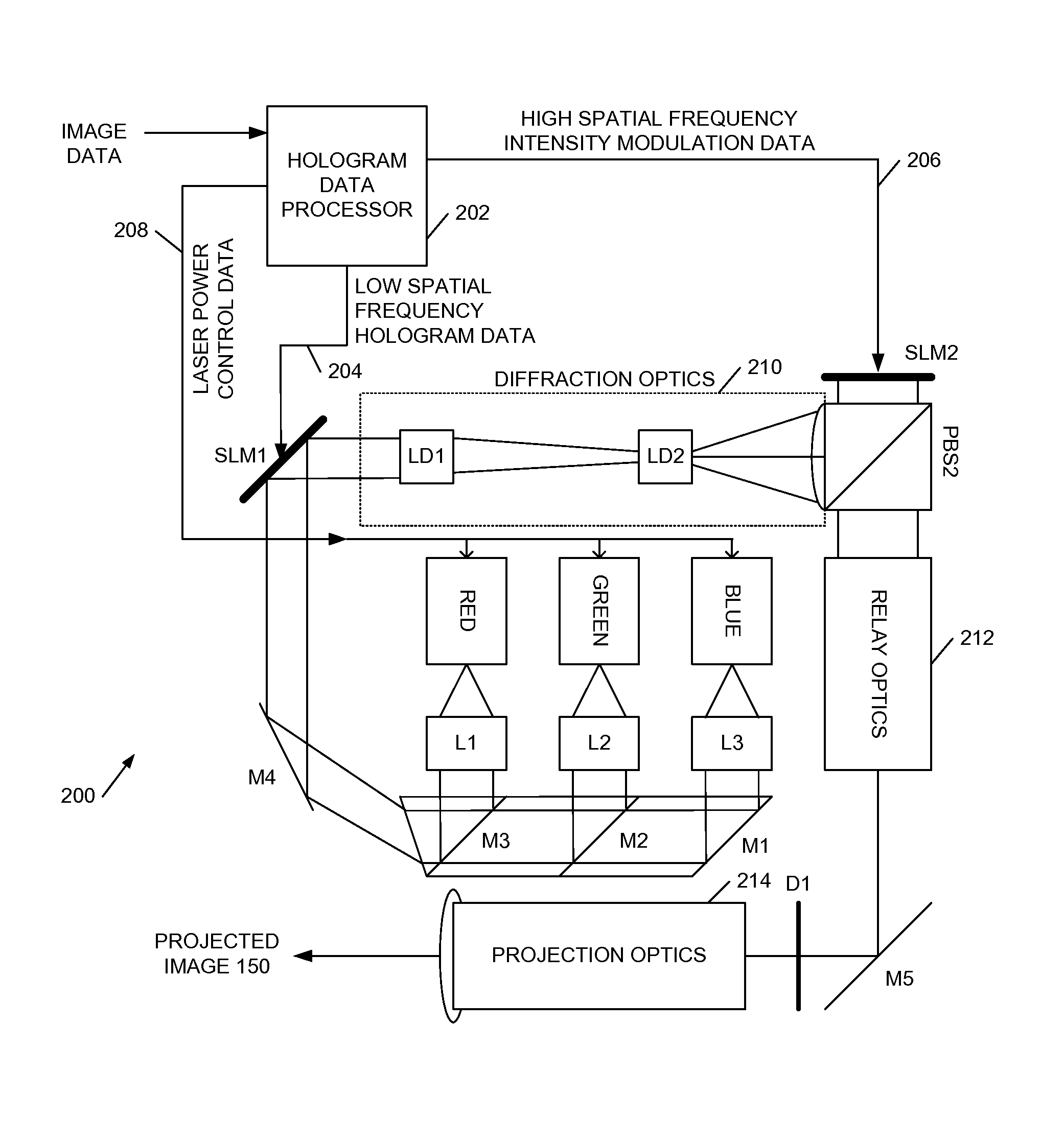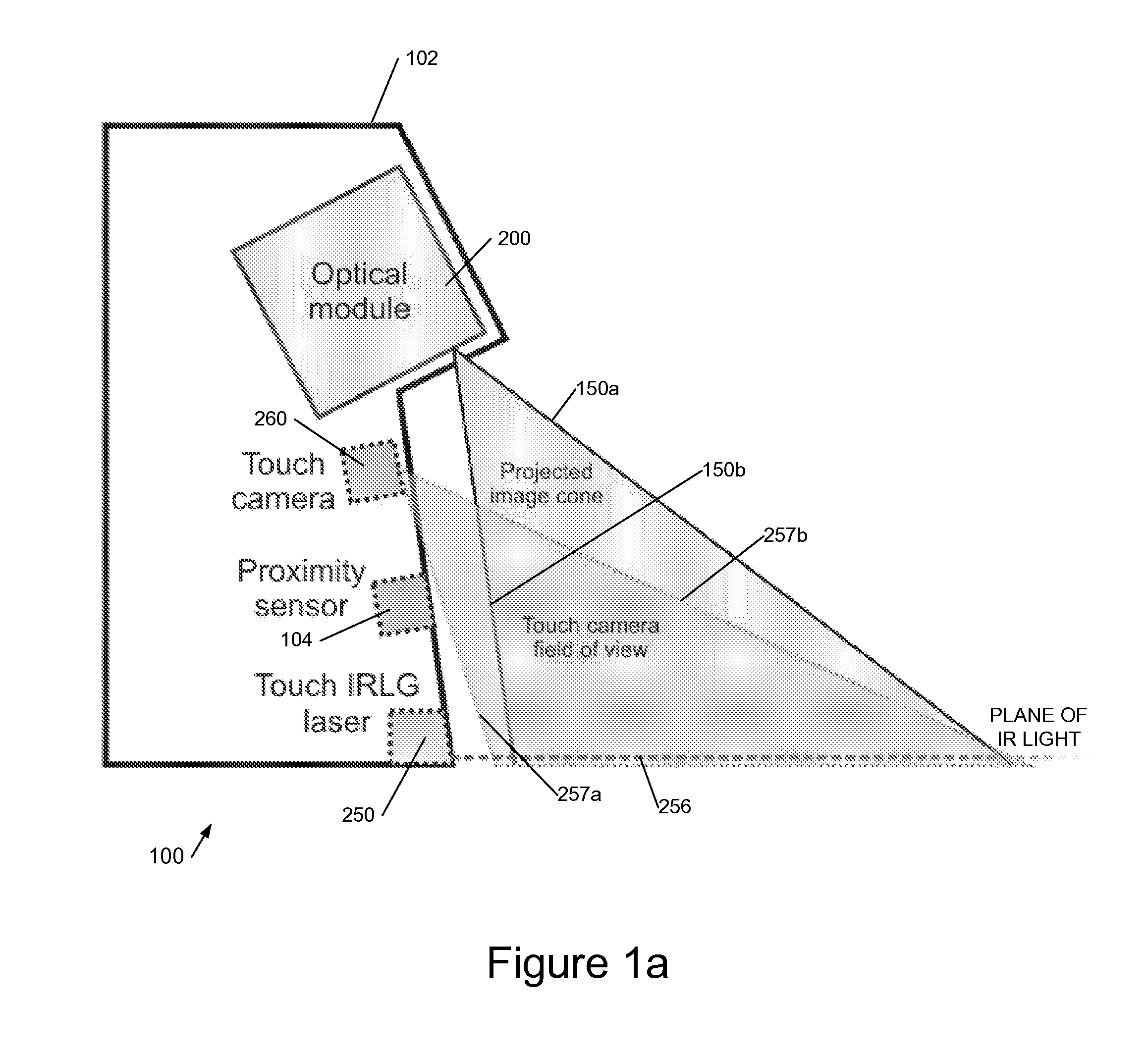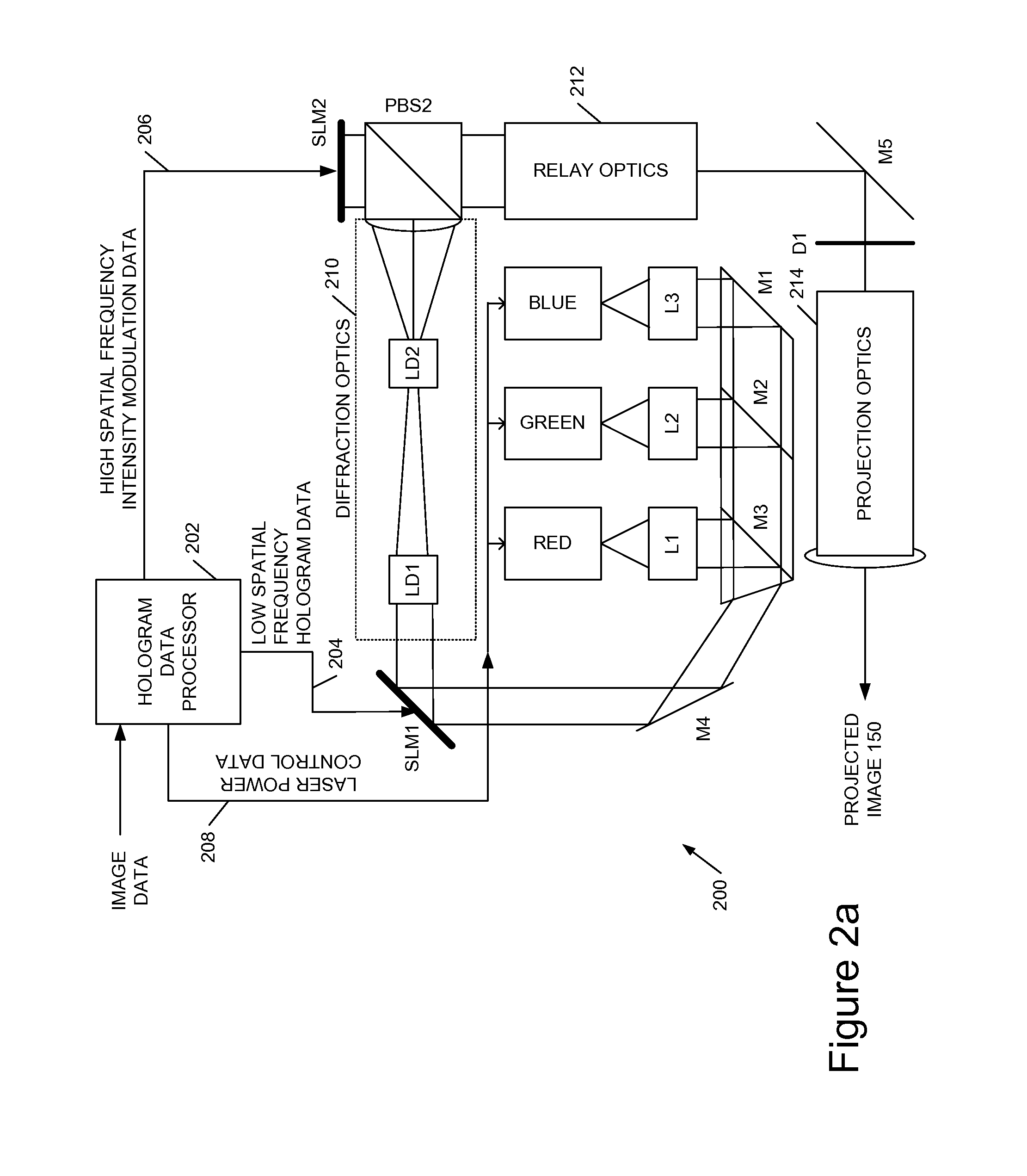Image display systems
a technology of image display and display system, which is applied in the field of holographic image projectors, can solve the problems of difficult to achieve efficient semiconductor laser operation in the green region of the spectrum, and the cost of green semiconductor lasers also tends to be high, so as to facilitate the achieving of the desired output wavelength, reduce the effect of speck and good efficiency
- Summary
- Abstract
- Description
- Claims
- Application Information
AI Technical Summary
Benefits of technology
Problems solved by technology
Method used
Image
Examples
Embodiment Construction
[0026]FIG. 1 shows an example holographic image projection device 100, as illustrated a touch sensitive device comprising a holographic image projection module 200 and a touch sensing system 250, 258, 260 in a housing 102. A proximity sensor 104 may be employed to selectively power-up the device on detection of proximity of a user to the device.
[0027]A holographic image projector is merely described by way of example; the techniques we describe herein may be employed with any type of image projection system.
[0028]As illustrated the holographic image projection module 200 is configured to project downwards and outwards at an acute angle onto a flat display surface such as a tabletop, but additionally or alternatively it may project forwards generally perpendicularly towards a display surface. A holographic image projector is particularly suited to acute angle projection because it can provide a wide throw angle, long depth of field, and substantial distortion correction without signi...
PUM
 Login to View More
Login to View More Abstract
Description
Claims
Application Information
 Login to View More
Login to View More - R&D
- Intellectual Property
- Life Sciences
- Materials
- Tech Scout
- Unparalleled Data Quality
- Higher Quality Content
- 60% Fewer Hallucinations
Browse by: Latest US Patents, China's latest patents, Technical Efficacy Thesaurus, Application Domain, Technology Topic, Popular Technical Reports.
© 2025 PatSnap. All rights reserved.Legal|Privacy policy|Modern Slavery Act Transparency Statement|Sitemap|About US| Contact US: help@patsnap.com



